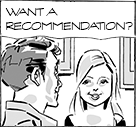Page 45 Review by Stephen
Every single page inside is bursting with beauty, with the feathered miracles of nature which so obsessed Jean-Jacques Audubon that he abandoned his wife with her blessing to travel throughout the perilous wilds of early 19th-Century North America and draw them in all their vivid glory. Truly the man was driven, and that drive proves infectious here.
435 truly enormous aquatint prints of gobsmacking colour and beauty were the result, collected over an eleven-year period into the 'Birds Of America', a gigantic tome of 200 editions, few of which sadly remain intact. In December 2010 one complete collection sold of £7.3 million at Sotherby's.
Our Jodie Paterson, an exceptional artist in her own right, recalled, "All the birds are life-size: eagles only just fit on the page, while hummingbirds swarm or else would seem lost." Jodie also noted that there are some nice nods to these paintings throughout this book, not just when we see him in his studio but also, without signposting, as organic parts of the visual narrative, like the passenger pigeons.
The original compositions are startling: so startling that Jean-Jacques Audubon (or John James Audubon, or simply Laforêt) only found favour once he'd travelled to Britain where the art establishment revelled in what to them were extraordinary exotica, the museums of America having roundly rejected the paintings as unscientific.
"What am I to make of this fluttering feather, or the blood on the beak of the Peregrine Falcon?"
"Life, Alexander, is what I aim to represent."
"As far as I'm concerned, it's inappropriate for sentimentality to take precedence over the object. But here it's the other way round. It looks as if it's going to leap from the page! It's too 'romantic'."
"For goodness' sake, Wilson! A bird is a living entity, not just lifeless matter!"
Although to be fair, Jean-Jacques, it wasn't quite so living after you shot it clean out of the sky.
"Yes, I represent my falcon screeching, squawking, pecking at the still-warm entrails of a duck! Devouring its flesh, his beak bloodied Yes! Yes! Yes! Precisely because that is life!"
Audubon made a lot of his drawings from life in situ, but he saw absolutely no conflict between wide-eyed adoration of his living subjects and harvesting them for further, angularly-posed inspection later on. He enjoyed hunting very much. It's almost comical at times.
"I often say that if I shoot less than 100 birds a day, they must be rare..."
This, it should be remembered, was before Darwin's time, and there's an early, eerie sequence back in his adopted home of Louisville, Kentucky, in 1812, when Audubon discovers a colony of swallows - some nine thousand, he calculates - nesting at night in an ancient hollow Sycamore he hacks into by day. He lies in wait for the flock's return then clambers up amongst them, bagging one hundred specimens for later examination. It's their seasonal departure en masse by the end of August that confounds him, along with their return to the exact same spot come Spring.
"Such an astonishing mystery...
"It seems that these swallows leave the woods for winter - but where do they go?
"Before winter, I'll try to mark a few."
However, it's his travels which we follow throughout most of the book. With but a guide, an apprentice and his art supplies, he navigates the Mississippi encountering all manner of dangers from the elements to the inhabitants; but he barely notices, for always it is the birds that take precedence, mesmerised as he is by each single sighting, or by the clouds of migrating passenger pigeons, so dense that they almost blot out the sky. Three days, they take to pass - such are their numbers!
The awe with which Audubon regarded the mysteries and majesty of nature would be lost or left weightless were the art in this book anything less than spectacular. On every single instance Jérémie Royer captures that majesty.
There are the flapping, multicoloured flocks in an almost Biblical scene as the three adventurers return to the raft they'd abandoned overnight in the wake of a raging storm to seek sanctuary in a cave... where, naturally, Aubudon seized the opportunity to sketch owls.
There's that raging storm itself, creeping ominously across the sky as we stare into the sun on the very first, blindingly beautiful page, then breaking instantly on the second, the pale light on the horizon all but obliterated by unimaginably vast, rich brown clouds.
Each chapter opens with a full-page panorama: river or sea shots of jaw-dropping splendour and intensity from Missouri to New Orleans. The quality of light is exquisite. It radiates from the heavens, glows through the clouds and it shimmers on the water's surface, while shafts of it penetrate canopies of leaves to illuminate forest floors and fauna.
Much of this is based on Audubon's writings, though artistic liberties are documented in the back along with a few reproductions of Audubon's own art prints pertaining to the graphic novel itself, including the Great-Footed Hawks and the eye-popping (and quite frankly mad) composition of the Carolina Parrots, both of which showcase Audubon's ability to animate with wings braced for fight or flight.

